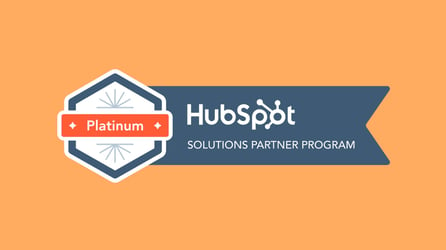Lessons Learned from Agile Marketing: Our Transformation Journey

If you’ve followed our blog for a while, you may have seen us talk about the agile marketing methodology a few times. The last time we wrote on the subject was just over a year ago, when we announced that we were preparing to adopt agile marketing at New Perspective. We dove headfirst into this agile transformation, and today we wrap up our 55th weekly sprint. So after a year (and a few weeks) of agile, what have we learned?
What is Agile Marketing?
In its most simplistic terms, agile is a better way of aligning your team so that everyone is on the same page. It places heavy emphasis on planning and communication, and breaks things down into small sprints – these are short periods of time in which the team works on agreed-upon tasks and goals.
By breaking things down into short sprints rather than marketing plans that take months to implement. The constant communication in these sprints allows teams to be flexible and change when something isn’t working.
The agile methodology increases a team’s efficiency by emphasizing transparency and flexibility. Going agile was important to us because of what it could do for our clients. With this system in place, our clients enjoy the benefits of a production team that is flexible, engaged, and ready to take on any challenge.
How do we do it?
At New Perspective, we use JIRA by Atlassian. With this tool, each team member has a board which shows the work they plan to do for the week. There are six columns on each person’s board: Planning, Ready, In Progress, Internal Review, Acceptance, and Done. These columns allow the team to see the status on every issue being worked on during the sprint.
There are several different ceremonies that are important to the agile methodology. There may be variations in how these ceremonies are carried out in different companies, but a typical New Perspective sprint cycle looks like this:
Every Friday afternoon, we gather the team for a two hour meeting. This meeting is comprised of two pieces: retrospective and sprint planning. We’ll start by talking about sprint planning – we’ll come back to the retrospective later.
During sprint planning, the team has a chance to get aligned on what’s going to happen for the next week. What tasks and meetings are going to happen? Are there tasks that must be completed – or tasks that rely on others to be completed first? Here we emphasize reasonable planning; is it possible for each team member to complete all of the tasks on their board?
We plan according to each person’s individual capacity – how much can that team member be expected to complete? – as well as the team’s capacity – how much should the team be able to complete as a whole? When we’ve agreed upon our tasks for the next week, we begin the sprint.
On each morning during the sprint, the team meets for a short morning scrum. During this time, we review each person’s individual board and communicate our expectations for the day. What’s going to get done? Are there dependencies on other team members? This is the time to speak up.
After each week-long sprint, we come back together for a retrospective. This is when we talk about the past week and address any issues or wins that came up. How did we succeed as a team? Did we meet our goals for the week? If not, why? And how can we improve moving forward?
After the retrospective, we move immediately into the sprint planning process, and the cycle begins again.
So what have we learned from our agile marketing transformation?
Caitlin: Transparency & communication
According to Caitlin, going agile has increased the transparency and communication across the whole team. Agile gives us opportunities to speak up about the work we want to accomplish and the barriers that might be in the way of it getting done.
And with JIRA, it’s fast and easy to glance at a team member’s board and understand what they’re currently working on, reviewing, or planning to get to. “Honestly,” Caitlin says, “I don’t know what we did before agile.”
Erin: Efficiency for us and our clients
Erin finds that agile has brought a whole new meaning to efficiency. When everyone is on the same page and can easily communicate with one another, there is a big increase in efficiency.
Dependencies and problems are identified quickly and addressed, meaning projects aren’t started and put on the back burner when an unexpected problem comes up. She finds that this is a great advantage for our clients: “It helps us to increase efficiency for our team, which helps our clients get the most out of their budget.”
Mike: Definitions enhance communication
“The best thing agile gave us was the definition of ready and done,” Mike says, “It gave us the vocabulary to address those questions before they come up.” There are several stages that an issue goes through before it can be considered “done” – Mike says that agile better equipped us to define those stages.
What does it really mean for something to be “ready” to work on? What is the implementer expected to do, and what is the role of the reviewer? What does the completed issue look like? Agile aligns the team and enhances communication, allowing these roles to be clearly understood.
Zach: Transparency & planning
“Transparency and planning have gone hand in hand so we can not only use our clients’ budgets efficiently, but also stay aligned as a team. Being able to know what everyone is working on for the week ahead has allowed us to plan our weeks accordingly.
Our capacities are taken into huge consideration which is helpful for anyone who has bandwidth to work on a task that wasn’t originally assigned to them. I’ve been able to keep track of a client’s budget and the tasks throughout the month with Agile.”
Kate: Room for growth
Kate’s biggest takeaway from agile is that it doesn’t assume we’re perfect – it shows us that there’s always room to grow. No sprint is ever perfect. Things will get changed, some items may not get finished because of dependencies on other team members or even on a client.
The weekly retrospective gives us the chance to talk about the things that we could have done better for that week – and if we could have done it better, how? It helps us to be more prepared when issues come up later, and to address problems as they come. According to Kate, “There is always room for growth, and agile helps us to plan for it.”
Jared: The whole package
Jared could go on and on about the benefits that the agile methodology has brought to our team. Like other team members, he loves the transparency and communication aspect of agile; he believes that it has led not only to higher productivity and better product, but to happier employees.
He loves that it allows us to prioritize our work and really focus our efforts. Rather than working on ten different tasks, agile has emphasized the importance of taking one task from start to finish.
For Jared, the planning and organization power of agile has been incredible. “It’s not about the plan, it’s about the planning. It’s not enough to put a date on something and say you’re going to get it done; agile allows you to plan out how it’s going to get done.”
Never stop improving
Our agile transformation wasn’t instantaneous; we have refined our processes again and again throughout the past year, and we are by no means done. With agile marketing, we aim to never stop learning and improving – and we look forward to continuously improving for years to come.
Want to learn more about the New Perspective team? Check out our about page to learn about who we are and what we value.




